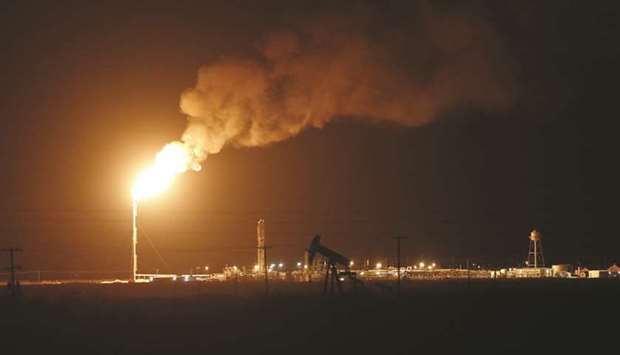Back in the days when shale oil was booming and the world was a less abnormal place than it is today, the popularity of American crude futures seemed to be growing by the day.
Not any more. Since US futures turned negative back in April, investors and companies have been drifting away from West Texas Intermediate, the flagship US grade. Open interest – the amount of contracts held – dropped by the equivalent of about 400mn barrels of oil from its highest level over the period, while Brent holdings have been steady by comparison.
A catalyst for the loss of interest appears to have been WTI’s plunge below zero dollars per barrel, reminding investors that they could theoretically have to pay others to take delivery of physical barrels that they bought in the futures market. Prices have also only recently risen to levels where it would be profitable for some producers to hedge future output.
“The fall in flat price in March and April did not help,” said Tamas Varga, an analyst at brokerage PVM Oil Associates Ltd, adding that risk-averse investors likely became increasingly cautious about putting money into WTI after the slump into negative territory.
WTI is traded on Nymex, which is run by CME Group. A spokesman for the company declined to comment.
In recent years, US producers made extensive use of WTI to hedge their surging output, boosting trading volumes that were further buoyed by soaring exports. While its open interest has fallen, day-to-day trading volumes for WTI still tend to outstrip those for Brent, the North Sea crude that’s often viewed as a more global benchmark.
“We see trading in oil slowing as US production and exports fall,” JPMorgan Chase & Co analyst Kenneth B Worthington wrote in a note to clients this week.
The slide into negative prices – and subsequent recovery – brought with it several challenges.
These included sizeable outflows from some of the largest bullish exchange-traded funds in the oil market, the majority of which hold WTI. Since June began, 12 of the largest bullish funds have seen combined withdrawals of almost $2bn – the most in at least 18 months. Brokers also stopped some investors from trading the most immediate contracts in the depths of oil’s rout.
As crude plowed new lows, the market’s structures have also suffered different fortunes. Brent futures briefly flipped into a so-called backwardated structure last week, indicating tighter supply and making it profitable for traders to roll positions from one month to the next.
While that’s since ebbed away, Brent has largely been stronger than WTI, with the US grappling with record high crude inventories. That makes WTI a less attractive choice for more passive investors.
All of that means that there’s never been more ICE Brent contracts held in total relative to WTI – for now, over 700mn barrels more.
“The shift could be due to portfolio rebalancing between the oil benchmarks in long-only investment vehicles,” said Harry Tchilinguirian, oil strategist at BNP Paribas SA. “The risk of negative pricing in ICE Brent is significantly lower than in Nymex WTI.”

The silhouette of an electric oil pump jack is seen near a flare at night in the oil fields surrounding Midland, Texas. (file). Since US futures turned negative back in April, investors and companies have been drifting away from West Texas Intermediate, the flagship US grade.


